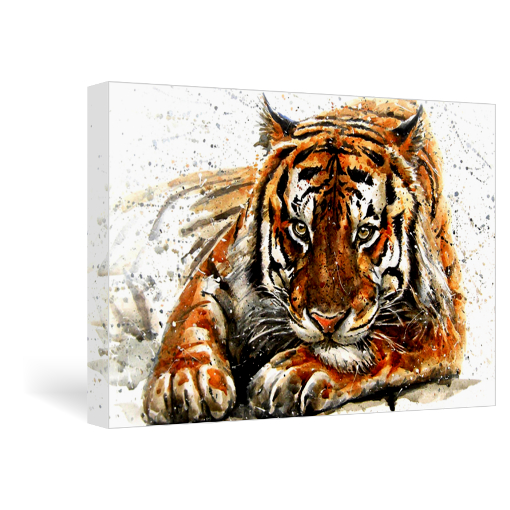Digital printing is only digital in the fact that it takes a digital file and converts it to ink on paper (or canvas). The actual digital printing process is very complex since it has to translate one type of color into another type of color. This is like translating words from one language to another. In this case, the two languages I speak of are RGB which is what things such as a computer monitor, digital camera, scanner and even your tv speaks and understands compared to CMYK, which is what your typcial printer speaks.
Consider an analogy of the modern English language compared to English one thousands years ago. The English language today as it evolved sounds different and has a broader vocabulary then what it once had. If you went back in time you would acutally need a translator and except for a few words, you would not understand what a person is saying to you. In this case lets assume your language is RGB and the person in the past speaks CMYK. It will be impossible to have a meaningful discussion without the use of a translator.
The same applies to any sort of digital printing, whether or not you are printing on your home printer at home or printing on a large format plotter like that used at FinerWorks. Your devices like your monitor and digital camera are speaking RGB and when you send it to your printer you are translating it to CMYK. These take the form of 1s and 0s and the accuracy of the translation can rely on many factors. One thing to remember is both of these languages are totally different and to put another element into it, if you were to use the language analogy in RGB, “yes” might mean “yes” but something speaking CMYK without the proper translation might hear and understand “no”.
That is because both color languages (actually called color spaces) are just the opposite of each other. As an example, when we are referring to RGB we are referring to the colors of red, green and blue. On a computer screen, which projects this light, when red, blue and green are combined you have the color of white. CMYK utilizes the colors of cyan, magenta and yellow. When these colors mix, in theory you get black or a muddy dark color. The K in CMYK stands for black and usually a supplemental color to help get a reliable black tone when all these colors mix.
Going back to the language analogy, when you convert RGB into CMYK, you need a translator. Since the two languages are so different, it is up to the translator to be accurate in the translation process. In this case the translator would be the printer drivers which are the software that sends your digital file to a printer. Some printer drivers are more advanced then others and also take into account the type of paper being printed on, types of inks and so on. Programs like Photoshop even have a soft proofing tool which lets you find the most accurate translation.
But even the best translator cannot match certain words from one language to another if there is not concept of that item in the earlier language. This leads to a question of gamut. Gamut is the same as a languages vocabulary. Obviously in early English there was no word for “air plane” so if someone where to translate it to someone in the past they may call it a “flying machine”. The person in the past might get the general concept but not see the whole picture. This is the same with gamut. If a color does not print correctly it could be that there is not accurate translation for that color so the printer tries to translate it into the next best thing which is something similar but not the same.
Order Giclee Printing on Canvas
Printed using some of the highest archival standards in the industry, your photos or artwork will last for decades to come.
